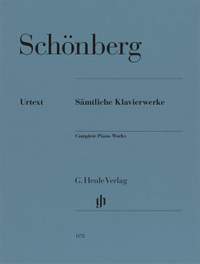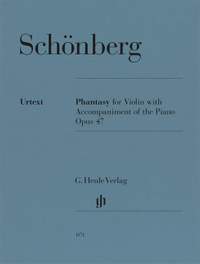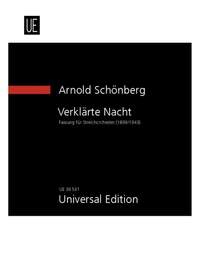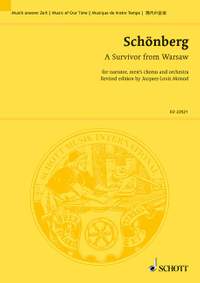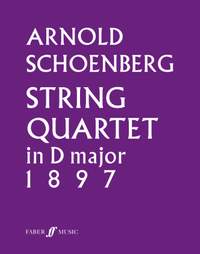Anniversary,
Arnold Schoenberg at 150
On this day 150 years ago, Austrian-born composer Arnold Schoenberg (aka Schönberg) was born in Vienna. One of the most influential and innovative composers of the twentieth century, he is synonymous with the German Expressionist movement which took place in the early years of the twentieth century. This movement encompassed music, art, and writing that aimed to convey the inner feelings and ideas of the composer or artist, often distorting reality in the process. Schoenberg was a pioneer of atonality and he is credited with inventing the twelve-tone technique, also known as dodecaphony or twelve-tone serialism. This technique involved using all twelve notes of the chromatic scale in equal measure, arranged in a specific order to create a tone row or series that formed the basis for the entire composition.
Schoenberg played a central role in the Second Viennese School, along with his pupils Alban Berg and Anton Webern, and other close associates in Vienna during the early twentieth century. Due to being a Jewish composer, his compositions were banned by the Nazi party, which led him to emigrate to the United States in 1933. Arnold Schönberg resided in the US until his passing in Los Angeles in 1951.
To commemorate the composer’s 150th birthday, we have curated a selection of some of our favourite Schoenberg sheet music.
Schoenberg Sheet Music
This volume brings together Schoenberg’s complete works for piano solo, including the free atonal pieces of op. 11 to the aphoristic op. 19, the fascinating tone-row experiments of op. 23 to the dodecaphonically conceived works op. 25, 33a & 33b.
Available Format: Sheet Music
While Schönberg certainly designated his op. 47 a “Phantasy”, the orientation of the relatively short piece around sonata form is unmistakable. An unusual wealth of sources survives for this work, which editor Eike Feß, a staff member at Vienna’s Arnold Schönberg Center, sorted and evaluated with great expertise.
Available Format: Sheet Music
Within three weeks, the 25-year-old Arnold Schönberg composed his string sextet Verklärte Nacht (Transfigured Night) after falling in love with his future wife Mathilde Zemlinksy in the summer of 1899. The sextet is one of Schönberg's tonal works. It is still firmly rooted in the late Romantic musical tradition, but already bears the signs of the innovations to come.
Available Format: Sheet Music
Shortly after the war, Schoenberg composed in his 99-bar monumental work depicting the suffering and oppression of an entire people. The story written by the composer himself describes the terror of the Nazi regime by example of a typical scene in the Warsaw Ghetto.
Available Format: Sheet Music
Schoenberg published four string quartets in his lifetime, but this String Quartet in D major was published by Faber Music posthumously in 1966.
Available Format: Sheet Music
Composed in 1906, this work for fifteen solo instruments represents a high point in Schönberg’s artistic development.
Available Format: Sheet Music
Books on Schoenberg
With this interpretative account, Sachs, the acclaimed biographer of Toscanini restores Schoenberg to his rightful place in the canon, revealing him as one of the twentieth century’s most influential composers and teachers.
Available Format: Book
Arnold Whittall | Schoenberg: ‘Night Music' – Verklärte Nacht and Erwartung
Cambridge University Press | Paperback
Arnold Schoenberg is often portrayed as a composer who began as a heart-on-sleeve late Romantic only to evolve during the First World War into an austere, mathematically-obsessed deviser of musical puzzles. This handbook refocuses the wealth of recent research into two of Schoenberg's major compositions; Verklärte Nacht and Erwartung, where the dramatic interplay between stabilising continuities and disorientating fragmentations reveals the elements of a modernist aesthetics that remained fundamental to Schoenberg's musical thought.
Available Format: Book



